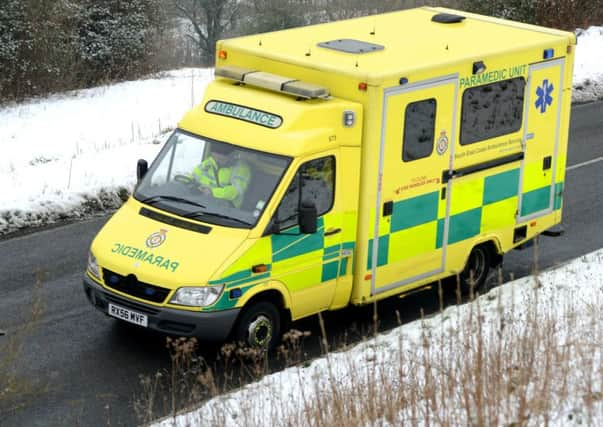‘Severe’ winter pressures led to SECAmb scheme


Paul Sutton, chief executive of South East Coast Ambulance Service (SECAmb) explained to West Sussex County Council’s Health and Adult Select Committee (HASC) on Thursday why the organisation ran a controversial project last winter.
The project, called Red 3, is being investigated by health regulator Monitor. It ran from December 2014 to February 2015 and allowed an extra ten minutes for assessments before ambulances were dispatched to some urgent calls.
‘Consistent pressures’
Advertisement
Hide AdAdvertisement
Hide AdMr Sutton, who is also a trained paramedic, said the retriage process was implemented in response to ‘consistent’ pressures across the patch.
“We are now responding to more and more calls from people who a journey to the local A&E department is rarely the best solution,” he told the committee.
“On a Saturday in the winter it is usual to receive about 7,000 calls on NHS 111.
“It can mean that there is a degree of over-triage from the calls that come from 111 to that 999 queue.
Advertisement
Hide AdAdvertisement
Hide Ad“Our concern at the time was some of these calls when we are not overly confident of the category could have been and were life-threatening patients such as those in cardiac arrest, and others may not need an ambulance at all.”
Ebola
The committee heard the ambulance trust was also concerned about the threat of ebola.
Briefing papers provided by SECAmb and seen by the committee said: “The winter of 2014/15 saw us as a service facing unprecedented levels of demand from our patients, alongside ebola, which posed a very real threat to our staff at times.”
Speaking to East Sussex county councillors last Thursday, Mr Sutton said there were ‘scares every couple of days about people coming off planes at Gatwick’.
Advertisement
Hide AdAdvertisement
Hide AdHe added: “We did manage some ebola patients during that period. We also had a national strike.”
Dr James Walsh, vice chairman of HASC, said he was looking forward to seeing conclusions of the review by health regulator Monitor.
However he questioned: “Whatever the motives and driving factors which were unknown to board members and outside your normal open and transparent procedures involving CCGs and ourselves, didn’t this actually amount to an attempt to fiddle the figures by giving yourself an extra ten minutes to appear to keep within targets?”
However Mr Sutton denied the claims and stated the scheme was implemented in response to patient safety concerns.
Advertisement
Hide AdAdvertisement
Hide AdHe said: “This was about ensuring the category of the patient was accurate. Any of the delays are included in the national response times.”
Mr Sutton said the main problems affecting SECAmb are funding and queues at acute hospitals, which delays ambulances.
He also added he wanted to make sure all hotels had public access defibrillators because they were ‘as important as fire extinguishers’.
Margaret Evans, chairman of the committee called for SECAmb to share its action plan as a result of the pilot scheme at the next meeting of HASC
Advertisement
Hide AdAdvertisement
Hide AdA forensic review into SECAmb’s pilot project will be undertaken by Deloittes and there will also be further patient impact and governance reviews.
Ambulance handovers
Health boss Paul Sutton said one of the main problems facing the ambulance trust is the patient handover at acute hospitals.
Speaking at West Sussex County Council’s Health and Adult Social Care select committee meeting, Cllr James Walsh asked Mr Sutton, chief executive of SECAmb to quantify the scale of the A&E queues at hospitals at a ‘typical’ time of day.
“We can often have over a third of our resources not available because they are tied up waiting to hand over patients at hospital,” Mr Sutton told the committee.
Advertisement
Hide AdAdvertisement
Hide AdCllr Stephen Hillier told members he was aware of the ‘staggering’ effect that A&E queues have on SECAmb’s ability to provide services.
“I’m also aware that A&E departments have the ability to effectively close themselves off to any more ambulances because they are at capacity,” he said.
“I think having seen the figures I’ve seen that some A&E departments that might be perceived to go a bit early on this which enables their figures in terms of handover times to be protected.”
But Mr Sutton said he had seen a ‘big improvement’ in the way hospitals bosses handled emergency calls, adding he didn’t think this was the currently the case.
“I don’t think that is happening anywhere today,” he said.
He added that the trust works closely with colleagues at clinical commissioning groups and hospital trusts.
Paul Sutton said he was happy to return to HASC with hospital handover data.